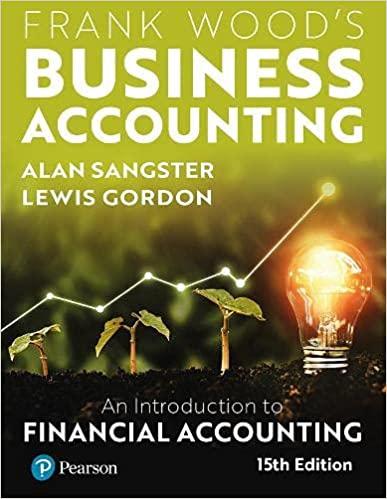Question
1) An investor, A, sells shares that have been borrowed from their owner, C, via a broker, B, for a market price $18 each. No
1) An investor, A, sells shares that have been borrowed from their owner, C, via a broker, B, for a market price $18 each. No fee is charged for the loan of the shares, and there are no other transaction costs.
-
Investor A could gain from the short sale only if there is an arbitrage opportunity at a price of $18 per share.
-
This transaction is an example of a naked short sale, that may be treated as fraudulent in some jurisdictions.
-
Suppose that A returns the shares when their price has decreased to $16. Then the lender investor C - makes a profit of $2 per share from As short-sale.
-
Investor A is effectively making a risky bet that the share price will be lower than $18, when the shares are returned to their owner, investor C.
These is at least 1 correct answer.
-
On 1st October 2012, Kappa plc announced a 2-for-1 split of its ordinary shares, upon which the share price fell from $93 (old shares) to $44 (new shares).
-
The evidence shows that there is an arbitrage opportunity, buy the shares imme- diately after the announcement and sell them shortly after the split has occurred.
-
The information provided is insufficient to determine whether the market for Kappas shares is informationally efficient.
-
The evidence from Kappas share-split shows that the market for its shares is semi-strong form inefficient.
-
The evidence from Kappas share-split shows that the market for its shares is weak form inefficient.
-
The evidence from Kappas share-split shows that the market for its shares is weak form efficient.
-
These is at least 1 correct answer.
6) An investor chooses a portfolio of just two risky assets, with 1 = 12%, 1 = 0.06, 2 = 8%, 2 = 0.02. The investor prefers more expected return relative to less, and prefers less risk (standard deviation) to more. [Notation: j : expected rate of return on asset j; j: standard deviation of return on asset j.]
-
The investor will hold only asset 2 because it has the smallest risk.
-
The investor will hold only asset 1 because it has the highest expected rate of return.
-
Theinvestorwillinvest1/3ofinitialwealthinasset1,and2/3inasset2,because the standard deviation for asset 1s return is three times that of asset 2.
-
If 1/4 of initial wealth is invested in asset 1, and 3/4 in asset 2, the expected rate of return on the portfolio is 9% irrespective of the covariance between the returns.
-
If 1/4 of initial wealth is invested in asset 1, and 3/4 in asset 2, the expected rate of return on the portfolio is 9% only if the covariance between the returns equals zero.
These is at least one correct answer.
Step by Step Solution
There are 3 Steps involved in it
Step: 1

Get Instant Access to Expert-Tailored Solutions
See step-by-step solutions with expert insights and AI powered tools for academic success
Step: 2

Step: 3

Ace Your Homework with AI
Get the answers you need in no time with our AI-driven, step-by-step assistance
Get Started


